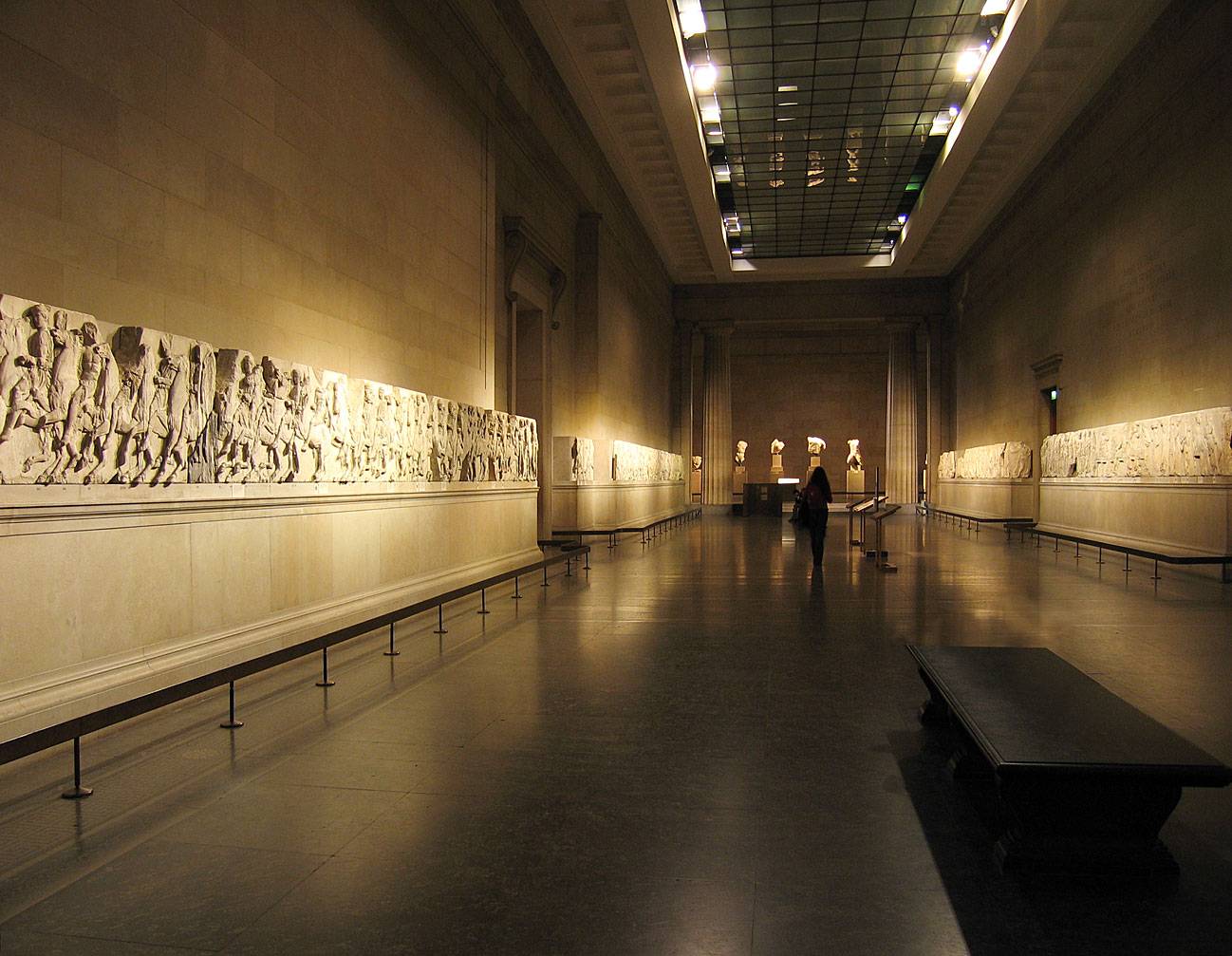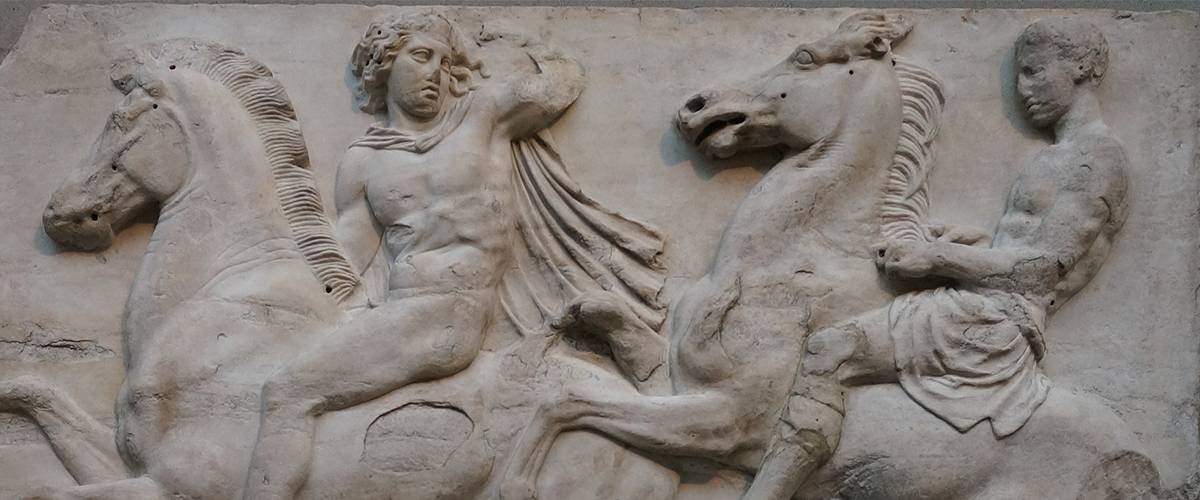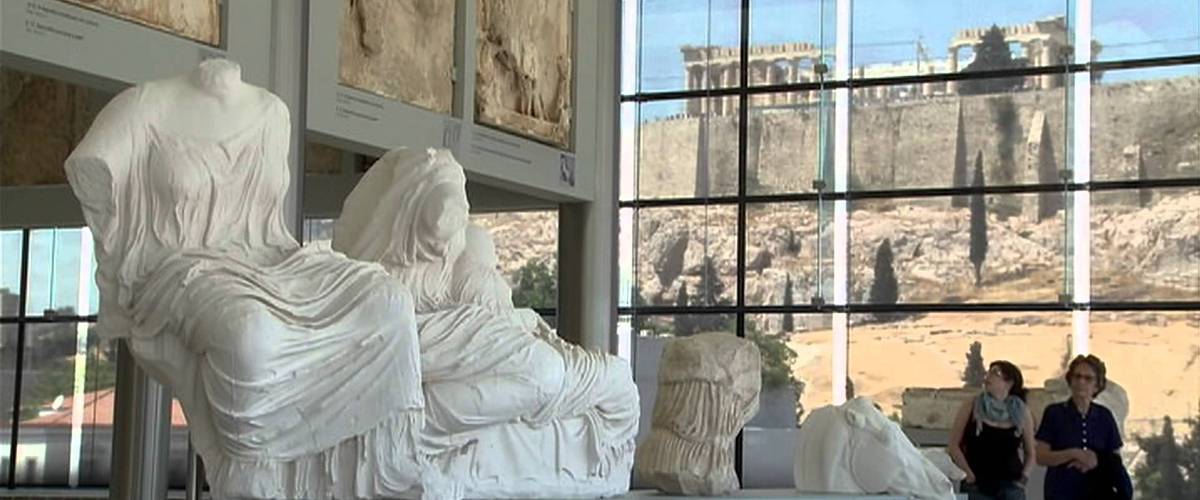By natural law it is just that no one should be enriched by another's loss or injury.1
- Sextus Pomponius, Roman Jurist.2
At Aôthen, through our Artifacts Project, we are committed to raising awareness about cultural artifacts whose ownership is contested. So, the campaign to return the Parthenon Marbles to Greece falls well within our ambit. Indeed, it compels us to join the Greek cause and lobby for reunification. Greece’s long crusade for restitution began right after its independence in 1832, and yet to this day the British Museum and its abettors insist on keeping the Marbles in London. Greece has been denied the natural right to its cultural heritage in a tragedy spurred by a diplomat and maintained by a museum.
Between 1801 and 1812 the workmen of Thomas Bruce 7th Earl of Elgin—otherwise known as Lord Elgin—hacked away at Athena’s temple. Elgin sought social aggrandisement, and the fragments he had carved off of the Parthenon served as an avenue to finance his climb up the English class system. So, he bundled what he had taken from the Parthenon onto ships, ferried it over to England, and sold it to the British Parliament. Sections of the frieze, metopes, and pedimental figures–the Marbles–were then transferred to the British Museum for safekeeping.
The museum’s official position in the ownership dispute can be found under their webpage for the ‘Parthenon Sculptures’: Lord Elgin, after being granted a “permit”, “removed about half of the remaining sculptures from the ruins of the Parthenon”3. The Marbles were acquired, bought, and are held lawfully.
Only an Italian copy of the supposed permit (or ‘firman’) authorising Elgin’s ‘removals’ has been found. When translated into English, the document clearly limited Elgin’s workers to taking moulds and measurements of the Parthenon, along with a general right to collect rubble and stones littered around it. This contradicts the British Museum’s narrative that pieces of the Parthenon were allowed to be “removed” (a euphemism for ‘sawn-off’). Moreover, the veracity of the firman is in doubt. At the time of Elgin’s despoilment, Greece was under the control of the Ottoman Empire. This meant the Parthenon fell squarely under the jurisdiction of the Sultan, whose formal decrees were adumbrated in the firmans. Yet the firman assenting to Elgin’s expedition does not adhere to official protocols, this indicates the Sultan never gave his approval. The decree is not dated in Arabic, its formal preamble is missing, and the Sultan’s emblem and monogram are entirely absent. The evidence establishes that Elgin’s permit was illegitimate. The firman did not sanction Elgin’s project, and it certainly did not authorise his vandalism.
Still, despite there being no valid legal claim to the Marbles, the British Museum clings to the idea that they ought to remain in London. Four key arguments are associated with this position: the “encyclopaedic museum”, the “slippery slope”, the “matter of law”, and the “Elginisation” objections. Each appeals to the colonial impulse, and each has been repudiated by academics4, lawyers5, and writers6.
Curators like James Cuno7 appeal to the “encyclopaedic museum” for justification. Apparently, keeping the Marbles in the British Museum makes them more accessible to the public. By presenting the metopes, frieze, and pedimental figures alongside cultural pieces from Africa, Italy, and Asia, visitors can appreciate the Marbles in a global (hence encyclopaedic) context. Encyclopaedists contend that this arrangement facilitates Greek culture far better than a united Parthenon ever could. But the Marbles, by definition, cannot be authentically appreciated until they are reunified with the Parthenon from which they were wrenched. They exist in a Greek context only, not in the global context Cuno and his supporters thrust upon us. Filling museums with broken segments of architecture does not advance culture, it dilutes it. The British Museum must substitute the Marbles with plaster casts like those Elgin was originally commissioned to make.
Others fear that reunification will trigger a slippery slope: if the British Museum returns the Marbles, where do they draw the line? Must every demand for restitution be satisfied? These questions would carry little weight unless those expressing this concern were aware that entire collections had been dubiously acquired. The confession is implicit in the question. If there is sufficient reason to return a stolen artifact it ought to be returned. As for the Marbles, reunification does not engender a dangerous precedent because the Parthenon has no analogue: Greece endures (unlike, say, Carthage), the Marbles are not a complete work (they are pieces), and the Acropolis Museum in Athens has a dedicated space for them once they are repatriated. Accordingly, fears of an ineluctable declension are unfounded.
In late 20238, the Prime Minister of the United Kingdom and leader of the Conservative Party dodged the issue. He assessed the Parthenon dispute as being ‘a matter of law’. According to Sunak, whether or not the Marbles are repatriated is a decision for the museum trustees, not for the government. But a majority of the trustees (15 of the 25) are appointed by the Prime Minister. Consequently, all Sunak needs to do is pack the board with trustees eager to return the Marbles to Greece. Although it is true the British Museum lacks authority to cede museum property carte blanche, the government can amend the 1963 British Museum Act. By repealing Section 3(4) of the Act, the trustees appointed by Sunak would become authorised to de-accession the Elgin Collection. In fact, this would not be the first time the government used legislation to circumvent de-accession restrictions: the Holocaust (Return of Cultural Objects) Act of 2009 established the right of British Museum trustees to return artwork stolen from Jewish owners by the Gestapo during World War II. So Sunak should appoint new trustees and amend the law. Simple.
However, do we need to consider the British Museum’s 200 year conservation of the Marbles? As custodians, has London generated a greater right to the Marbles than Greece? This is the ‘Elginisation’ argument, and of all the arguments against reunification, it is the most repugnant. Its logic would exempt a burglar (and his or her beneficiaries) from returning stolen property provided they were responsible. It would mean that so long as a requisite standard of care is maintained over a sufficient duration of time, theft transmogrifies into ownership. This perversion of property rights is, prima facie, wrong. You cannot excuse plunder because the looter happens to be a better steward. Ergo, Elgin cannot be exculpated with appeals to the British Museum’s record, and even if you could, the British Museum has never been a responsible custodian–it has neither protected nor conserved Elgin’s spoils9. In the 20th century, the Marbles were ‘whitened’ with scouring agents and copper rods in what came to be known as the ‘Duveen cleaning scandal’. During the whitening, original surfaces were cut away, hammered at, and scraped off. The harm was deemed so egregious that an internal inquiry found the damage was “obvious and cannot be exaggerated”10. The notion that the British Museum at any point in time generated an entitlement to the Marbles is baseless on both moral and factual grounds.
Evidently, the British Museum has profited from illegal taking. Museums fatuously described as ‘encyclopaedic’ are conglomerations of mass larceny rebranded as temples of edification; that was not their design, it is merely post hoc rationalisation. The Marbles and the Parthenon have no equivalent–historically, culturally, or architecturally–meaning reunification will not bring about a slippery slope. Legislative fatalism is another red herring. Amending British Museum policy is as achievable as the UK government is willing. And finally–and most obviously–stealing is wrong, no matter how conscientious you might be.
Not one of the aforementioned arguments are compelling enough to override Greece’s enduring right to its culture. A fortiori, Greece’s claim to its cultural heritage is legitimate and incontestable. There is no case for keeping the Marbles in London and every reason to return them to Greece. Here at Aôthen, we enjoin the UK government to give back what was never theirs.
— Mortal! — — 't was thus she spake — — that blush of shame
Proclaims thee Briton, once a noble name;
First of the mighty, foremost of the free,
Now honour'd less by all, and least by me:
Chief of thy foes shall Pallas still be found.
Seek'st thou the cause of loathing? — look around.
Lo! here, despite of war and wasting fire,
I saw successive tyrannies expire;
'Scaped from the ravage of the Turk and Goth,
Thy country sends a spoiler worse than both.
- The Curse of Minerva, Lord Byron on the Parthenon and British depredations.11
Dominic Wexler's article was first published in Aôthen Magazine (named after the Doric Greek term for the earliest dawn), a magazine that is dedicated to all kinds of classics-inspired content; artworks, poetry, essays, reviews, photography, and more as a celebration of both archaeology and history.
Dominic Wexler studied history, ancient history, and philosophy for his bachelor’s degree and is currently undertaking a graduate degree in law. He is also an aspiring essayist whose work has been published in the L’Esprit Literary Review and hopes to be published again. His interests are broad, from literature to politics. Despite a busy schedule, reading and writing about the classics has remained a fixture in Dominic’s life. You can find him on Twitter @djwexler.
You can also read Dominic's articles on Substack.

1 Jure naturae aequum est neminem cum alterius detrimentum et injuria fieri locupletiorem.
2 Jack G. Handler and James Arthur Ballentine, Ballentine’s Law Dictionary, 1994, http://ci.nii.ac.jp/ncid/BA22885743.
3 “The Parthenon Sculptures,” The British Museum, n.d., https://www.britishmuseum.org/about-us/british-museum-story/contested-objects-collection/parthenon-sculptures.
4 Professor Vassilis Demetriades, “Was The Removal Illegal?,” n.d., http://www.parthenon.newmentor.net/illegal.htm; “Profs. Zeynep Aygen & Orhan Sakin | Ottoman Archives for the Acropolis,” The Acropolis Museum, February 19, 2019, https://www.theacropolismuseum.gr/en/multimedia/profs-zeynep-aygen-orhan-sakin-ottoman-archives-acropolis.
5 Geoffrey Robertson, Who Owns History? (Random House Australia, 2020).
6 Christopher Hitchens, Robert Browning, with a preface from Nadine Gordimer and a contribution by Charalambos Bouras, The Parthenon Marbles: A Case for Reunification (Verso 2008). Earlier edition also Christopher Hitchens, Robert Browning and Graham Binns, The Elgin Marbles: Should They be Returned to Greece? (Verso, 1997); Christopher Hitchens, Imperial Spoils: The Curious Case of the Elgin Marbles (Hill & Wang, 1988).
7 OxfordUnion, “We Should NOT Repatriate Artefacts | Dr James Cuno | 4 of 6,” January 10, 2017, https://www.youtube.com/watch?v=gmY6tkTBaks.
8 Aletha Adu, “Sunak Says Retaining Parthenon Marbles Is Matter of Law as He Denies ‘Hissy Fit,’” The Guardian, December 1, 2023, https://www.theguardian.com/artanddesign/2023/dec/01/sunak-parthenon-marbles-matter-of-law-denies-hissy-fit.
9 William St Clair, “The Elgin Marbles: Questions of Stewardship and Accountability,” International Journal of Cultural Property 8, no. 2 (January 1, 1999): 391–521,
https://doi.org/10.1017/s0940739199770803.
10 Neils, Jenifer. “Cleaning and Controversy: The Parthenon Sculptures 1811-1939. By Ian Jenkins.” American Journal of Archaeology 107, no. 3 (July 1, 2003): 507–9. https://doi.org/10.1086/ajs40025412.
11Lord Byron, The Curse of Minerva, 4th ed. (Galignani, 1820).








Comments powered by CComment